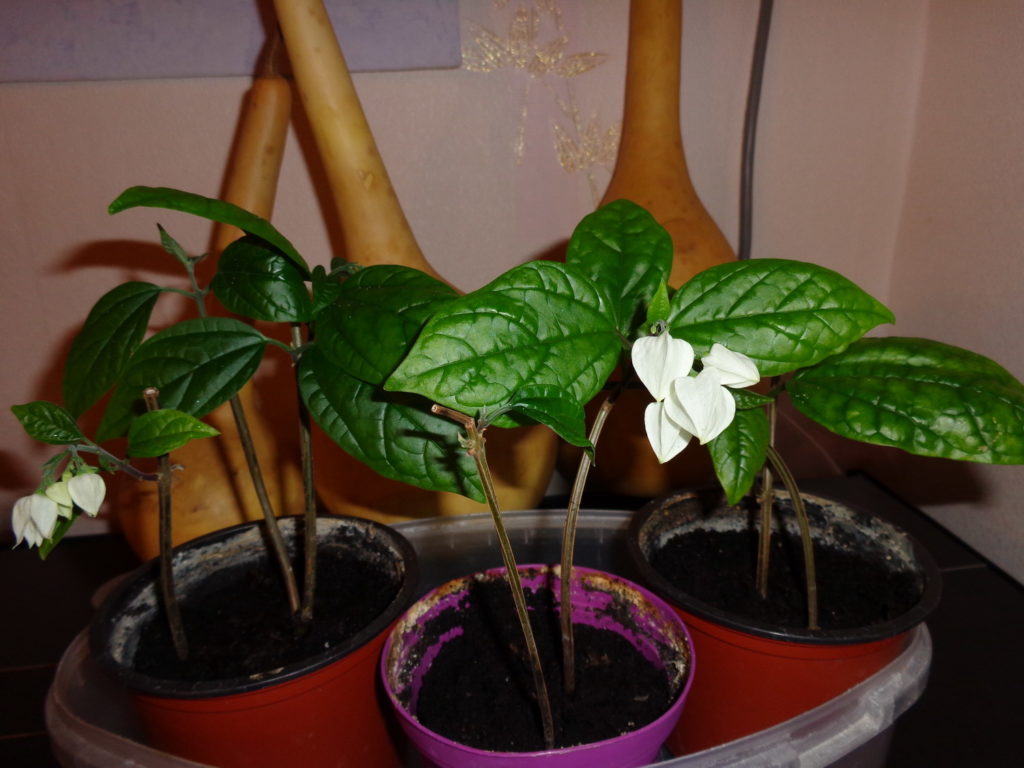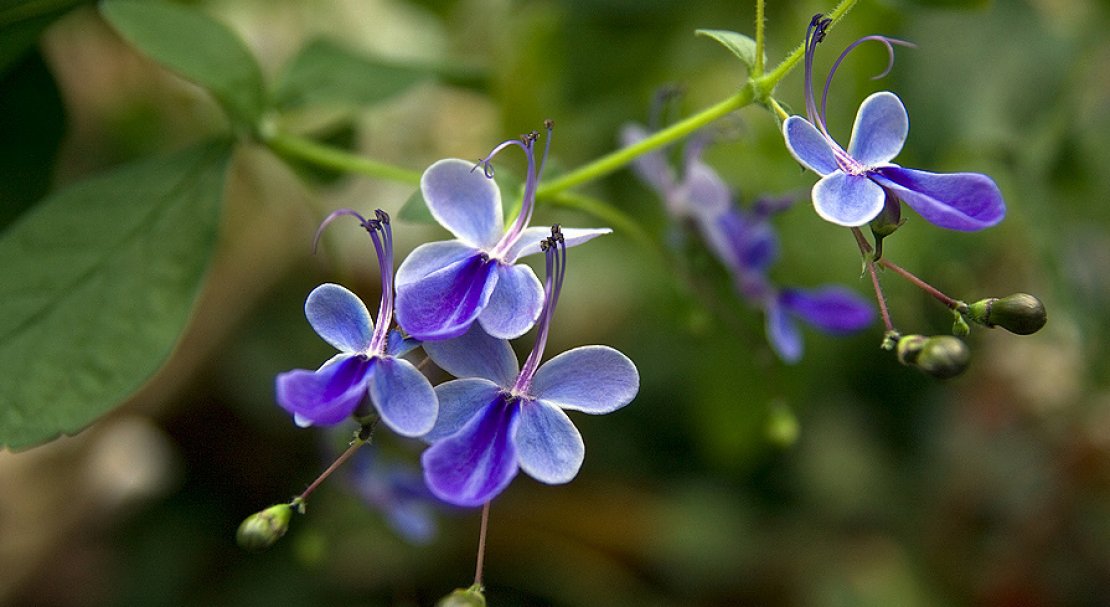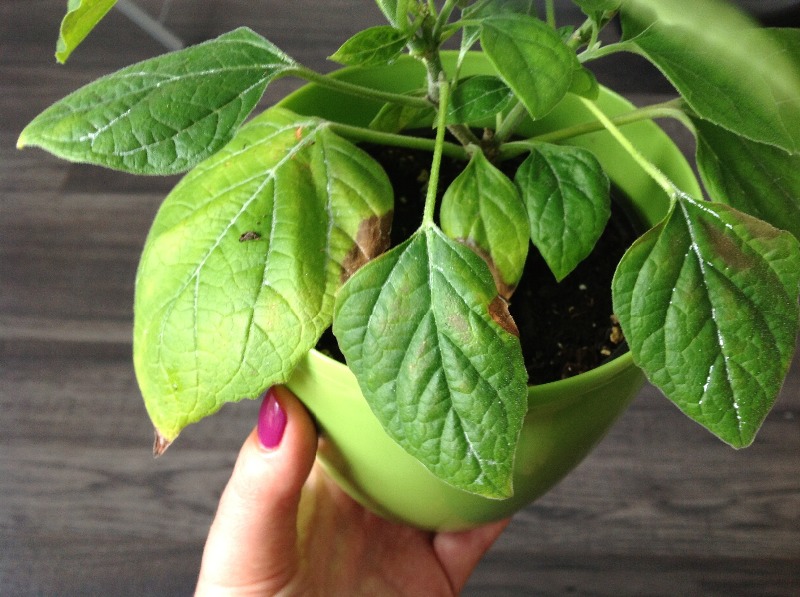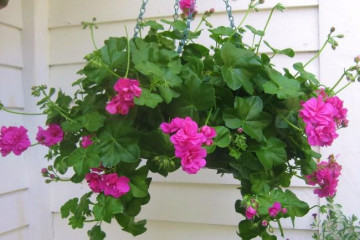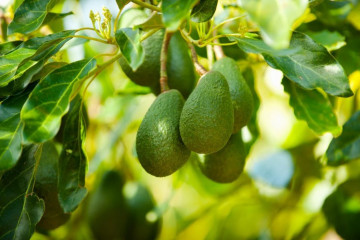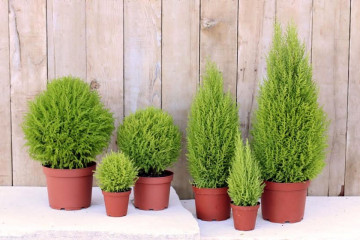How to care for clerodendrum at home
Content:
The clerodendrum flower is a lush shrub and small tree. In normal nature, this plant can mainly be found in the tropical territories of Africa, South America and China. Its name, translated into Russian, means "the tree of happiness", but it is also called "innocent love." The cultivation of clerodendrum began about two hundred years ago. However, as a house plant, it is known relatively recently, and in a short period of time the flower fell in love with both gardeners and landscape designers. Below we will consider how to plant a clerodendrum flower, home care and cultivation.
Clerodendrum: home care
If you adhere to some care requirements, you will be able to independently grow one or more representatives of this flowering vine. The flower will be a luxurious decoration in an apartment or in an outdoor garden.
Clerodendrum is very often used as part of a design. An undemanding and easy-to-form vine, with which there are no problems at all.
You need to adhere to some tips for caring for a clerodendrum flower at home:
- put a flower on the east or west windowsill so that there is a lot of light, but direct rays do not fall on it;
- watering every day, so that the soil is slightly moist on top, in the winter you need to water once a week;
- a suitable temperature in summer for a plant is about 23 degrees, and in winter - 17, in this case it is possible to achieve abundant color;
- the pot should be placed on a pallet or saucer with a little water;
- every day you can wipe the leaves with a damp cloth;
- in the summer, give top dressing once a week;
- regularly pruning the plant, this activates growth, and also gives the bush the correct shape.
Pruning
In young individuals, the tips of the tops are pinched off. Adult vines require a tougher pinching. There is no need to pity the plant - it grows back easily after pruning, it will start up a lot of side shoots. All petals are pinched to a third of their length. Inflorescences are formed on lateral annual shoots.
The traditional form of clerodendrum is liana. At home, it is usually grown as an ampelous plant with freely hanging vines or attached to a support, setting the required direction of growth. The plant is easy to shape - it can be cut like a small bush or tree.
The shape of the tree. In a young clerodendrum, only the single strongest shoot is left, tied to a vertical beam, the rest are completely cut off. When the plant grows to half a meter, its crown is cut off. The growth sites of the next lateral shoots must be pinched off for more active branching. All stems below the recommended top level are trimmed from time to time.
To give the desired shape, every year during the pinching, all the stems of the plant are cut to the preferred height. The side branches are pinched off so that the bush is thick and lush.
Transfer
Basically, indoor clerodendrum is transplanted in the summer after flowering about three times a year. It happens, they just change the topsoil. In winter, it is better not to transplant.The main reason is flowering. In order for the plant to bloom, pinching is recommended. But the transplantation cannot be carried out simultaneously with this process, since during the "relocation" the roots can still be deformed, and it will take time for the clerodendrum to start growing again, and only after that it can be cut off.
If you plant a plant in a larger container, then the flowering time may shift. Until the roots reach the walls of the container, the clerodendrum will simply continue to grow.
How to feed
Top dressing is necessary for clerodendrum. But how exactly to apply fertilizers, each grower decides independently. You can add phosphorus-potassium minerals in the form of granules or lumps to the soil mixture during the transplanting process. You can apply stick-shaped long-acting dressings. The most common are liquid dressings, they can be used to fertilize both roots and leaves.
Clerodendrum: how to propagate?
In clerodendrum, reproduction can be in two ways: by cuttings and with the help of seeds. These two methods are described below.
Clerodendrum: how to propagate by seed
They are usually purchased at a store or hand-picked. You also need to know that the longer the seeds lie idle, the harder it is for them to sprout. Therefore, it is advisable to sow, firstly, only new seeds, and, secondly, with a margin. The optimal time for sowing is at the end of winter. Planting pots must be prepared in advance.
Medium sized wooden crates, plastic containers and even glasses can be used. You also need to remember to make holes in the container to drain water. Now a few words about the soil in which the seeds will grow. It should be airy, nutritious and permeable. A mixture of two parts of turf soil, peat and river sand is prepared. Everything is mixed and processed. The composition is placed for twenty minutes in an oven at a temperature of one hundred and eighty degrees. After that, the mixture is allowed to cool, poured into planting containers and moistened abundantly. Then the seeds are sown. Now the container can be placed in the greenhouse or covered with glass. Condensate is collected in time.
Propagation by cuttings
How to propagate clerodendrum by cuttings quickly and efficiently? Vegetative propagation is an easier and more practical option that gardeners are happy to use.
The grafting process takes place from spring to early autumn. Harvested cuttings should contain at least three rows of buds. Next, the shoots are placed in a glass of liquid and covered with glass. After a while, you can see that the cuttings have formed roots. But so far they are very fragile and delicate. For the full development of the plants, they are transplanted into the soil.
Rooting cuttings
The rooting process takes place in stages:
- first you need to cut off all adult petals;
- the cuttings must be immediately placed in a container with clean water;
- put the container with cuttings in partial shade, where there is no direct sunlight;
- renew water from time to time;
- roots are formed within a few weeks;
- rooting a plant is quite simple, so even a beginner florist can handle it.
Clerodendrum: why it doesn't bloom at home
Clerodendrum Thompson: what kind of home care and why doesn't it bloom? All problems for which the plant does not bloom are related to improper care:
- wrong conditions of flower rest;
- the plant has not been transplanted for a long time;
- there are too few nutrient minerals in the earth, or vice versa, an overabundance.
This will be enough for the plant to shed some of the foliage and conserve nutrients for bud formation. But if you do not give the plant rest, then it may simply not bloom.
In order for indoor clerodendrum to please with its abundant flowering, all destructive factors must be removed, given the opportunity to grow in the right and comfortable conditions.
Why do leaves turn yellow and fall?
This is the most common plant problem. If the lower leaves turn yellow and this happens quite rarely, the flower gets rid of the old, spoiled greenery. This is a normal reason and there is no need to worry in such a situation.
What else is causing the foliage to fall off? There are several main reasons:
- frequent or rare watering of the plant;
- strongly stagnant water;
- cramped flower pot.
If yellow spots appear on the leaves, it may be:
- bad place for a flower (which means it needs to be rearranged);
- a cold wind blows on him;
- gets caught in drafts.
If the leaves began to fall off profusely, then the reason is in the dry air in the room. Also, the reason may lie in an excessive amount of sunlight.
To start treating a plant, first of all, you need to check the soil, adjust the irrigation regime and apply fertilizers. The ground should be soft, water and breathable. Too rough soil prevents water from absorbing. It is necessary to water the plant only with filtered (settled) water, the temperature of which is not higher than 25 degrees. Watering takes place: in the autumn, a couple of times a week; in winter - once every three weeks; in spring and summer - immediately when the soil dries up. If you properly care for the plant and follow these rules, then the disease will recede.
Clerodendrum: diseases that are inherent in it
The main problems and ailments for clerodendrum are spider mites, aphids and mealybugs. When the first signs of the disease are detected: if the leaves rot and curl, the indoor flower clerodendrum does not grow well, the shoots are crooked, you need to spray and treat the ground with fungicides. Depending on the severity of the disease, treatment is carried out from one to several times a month. After spraying, the flower is placed in a greenhouse for 2-3 days, covered with glass, and saved from direct sunlight.
Root and stem rot is a great danger to flowering clerodendrum. These diseases are caused by frequent watering. In this case, all damaged stems are cut off from the plant, sprayed with Fitosporin, and the abundance of watering is reduced.
Due to rot, the plant may die altogether. If the damage is too large, you need to take care of updating the flower in advance by taking a healthy and strong stalk.
In conclusion, it should be noted that it is quite simple to grow a houseplant clerodendrum on your own at home, the main thing is to adhere to the rules of caring for a flower and prevent various diseases. Gardeners' favorite varieties are Thompson and Ugandan.


